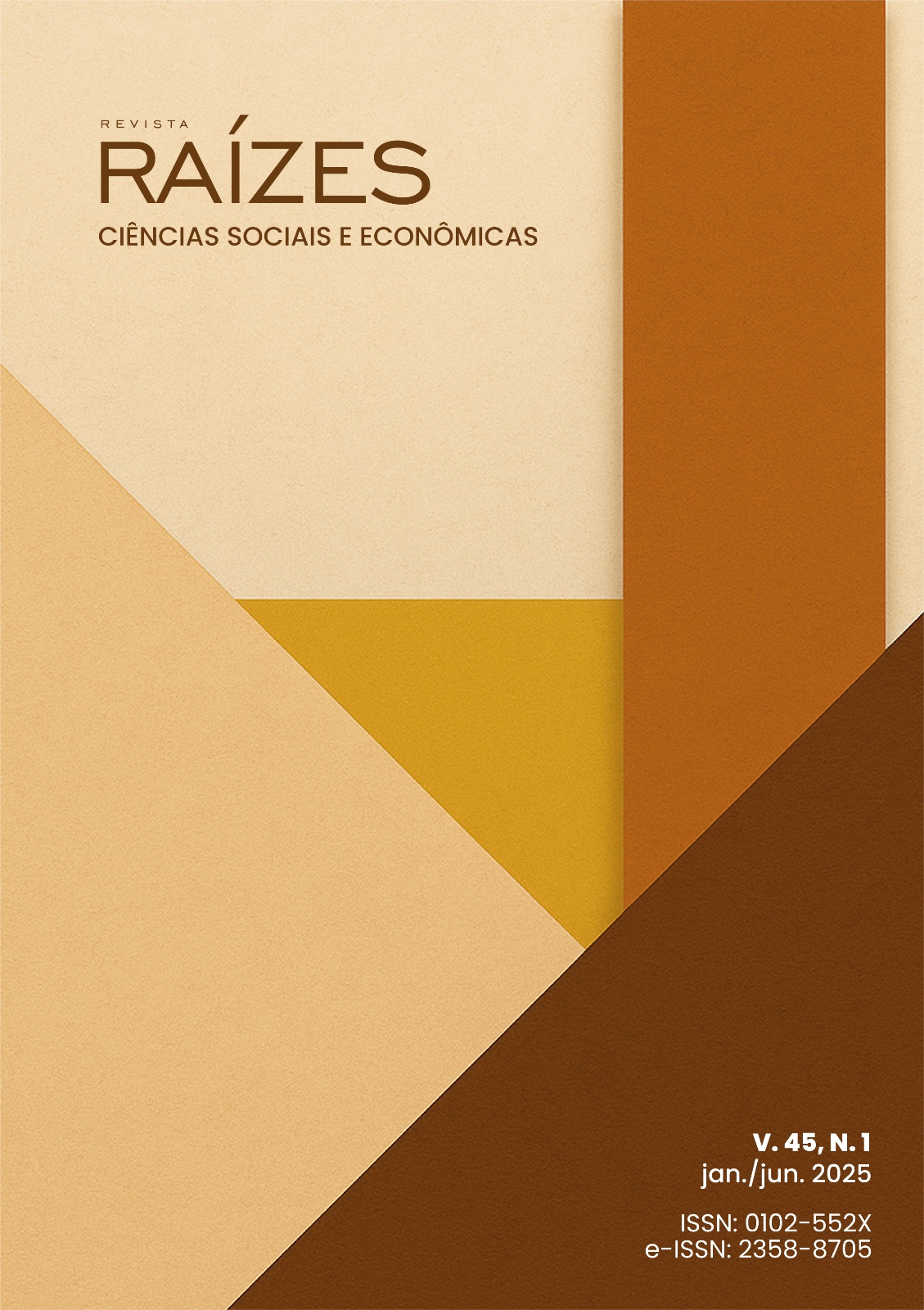REVISITING HISTORY: ON THE PLAGUE ROAD IN THE STATE OF PERNAMBUCO HISTORY OF THE PLAGUE IN PERNAMBUCO
Main Article Content
Abstract
This article revisits the trajectory of plague in the state of Pernambuco, Brazil, from the first records to the present day, focusing on the three main endemic regions: Exu, Garanhuns, and Triunfo, with the aim of clarifying poorly understood aspects and potentially redirecting the traditional understanding of the disease. Using a methodology that includes documentary analysis, literature review, and in loco observation during an expedition carried out in July 2023, the study explores the first cases of plague in the state and the control actions adopted over time. The background and development of the research and control work carried out by the Plano Piloto de Peste, the Estação de Biologia Experimental de Exu, the Laboratório Central de Garanhuns, and the Laboratório de Endemias de Triunfo are detailed. The article also analyzes the current situation of plague in these regions, highlighting the advances and challenges in monitoring and control strategies. The conclusion discusses the implications of the findings for public health and offers recommendations for future plague prevention and control actions in Pernambuco.
Article Details

This work is licensed under a Creative Commons Attribution 4.0 International License.
References
ALENCAR, T. O. Exu: três séculos de história. ISBN 978-85-912955-0-0, 2011.
ALENCAR, T. O. Igreja de São João Batista do Araripe - Exu-Pernambuco, Sesquicentenário 1868-2018, 2018.
ALMEIDA, A. M. P; LEAL, N. C.; TAVARES, C. Programa de peste e outras infecções microbiológicas. In: Coutinho, E. M.; Brandão-Filho, S. P.; Furtado, A. F. (Eds). Instituto Aggeu Magalhães: 70 anos de pesquisa e ensino para a saúde. Rio de Janeiro: FIOCRUZ, 2020 pp:147-161.
ALMEIDA, A. M. P. Frederico Simões Barbosa e a peste. Cadernos de Saúde Pública 32 (Suppl 1) • https://doi.org/10.1590/0102-311XES06S116, 2016.
BALTAZARD, M. Viagem de estudo ao Brasil para a organização de um projeto de pesquisas sobre a peste. Revista Brasileira de Malariologia e Doenças Tropicais, 20: 335-366, 1968.
BALTAZARD, M. [La démarche exemplaire d'un épidémiologiste de terrain M. BALTAZARD et les foyers de peste du Nordeste brésilien]. Bulletin Societé Pathologie Exotique. 2004;97 (Suppl): 87-117.
BARRERA, J. M. Relatório sobre a peste no Brasil. Washington: OPAS, 1960. Documento datilografado encaminhado pela OPAS ao MS em 18/10/1960.
BEZERRA, M. F.; ALMEIDA, A. M. P. Important Infectious Diseases in Latin America and the Caribbean: Plague. In: Mehlhor, H.; Heukelbach, J. (Eds.). Infectious Tropical Diseases and One Health in Latin America. Cham: Springer International Publishing, pp: 45-70, 2022.
BEZERRA, M. F.; FERNANDES, D. L. R. S.; ROCHA, I. V.; et al. Ecologic, geoclimatic, and genomic factors modulating plague epidemics in primary natural focus, Brazil. Emerging Infectious Disease. 2024 Sep [date cited]. https://doi.org/10.3201/eid3009.240468.
BRAMANTI, B.; STENSETH, N. C.; WALLØE, L.; at al., Plague: A disease that changed the path of human civilization. Yersinia pestis: retrospective and perspective. Springer. 2016; 918:1-26.
CUNHA, E. Os Sertões, 1902 (1ª ed.).
DIÁRIO DE PERNAMBUCO. Recife, Pernambuco, Brasil. ed. 00195 de 28/08/1957.
DIÁRIO DE PERNAMBUCO. Recife, Pernambuco, Brasil. ed. 00198 de 31/08/1957
DIÁRIO DE PERNAMBUCO. Recife, Pernambuco, Brasil. ed. 00194, de 28/08/1960.
FERNANDES, D. L. R.; GOMES, E. C. S.; FILGUEIRA, M. B.; et al., Spatiotemporal analysis of bubonic plague in Pernambuco, northeast of Brazil: Case study in the municipality of Exu. Plos One, v. 16, n. 4. p. 1-14, Apr. 2021. DOI 10.1371/journal.pone.0249464, 2021b.
FREITAS, O. Os trabalhos de hygiene em Pernambuco. Relatório apresentado ao secretário geral do Estado. Recife: Imprensa Official, 1919.
FREITAS, C. A. Histórias da Peste e de Outras Endemias. Rio de Janeiro: PEC / ENSP, 1988.
LOPES, D. R. Triumpho a Corte do Sertão. 2017 3ª ed. Gráfica Universal, Serra Talhada, PE.
PARENTE, C. M. C.; MIRANDA, C. A. C. “‘Armaria, ‘armaria’, ‘armaria’, a bubônica!”: comportamentos e estratégias coletivas diante de uma epidemia de peste que assolou Exu, no sertão pernambucano, em 1935. Revista NUPEM, Campo Mourão, v. 15, n. 34, p. 84-101, jan./abr. 2023. DOI: 10.33871/nupem.2023.15.34.84-101.
REGO, J. L. Pedra Bonita, 1938 (1ª ed).
SILVA, M. S. B.; ALMEIDA, A. M. P. Serviço de Referência Nacional em Peste. In: Coutinho, E. M.; Brandão-Filho, S. P.; Furtado, A. F. (Eds). Instituto Aggeu Magalhães: 70 anos de pesquisa e ensino para a saúde. Rio de Janeiro: FIOCRUZ, 2020 pp: 258-259.
SILVA, M. A. D. A Global Desert Plague, Rural Knowledge, and Epidemiological Reasoning in the Brazilian Backlands (1939– 1965). In: Rural Disease Knowledge. Ed. Silva, M. A. D; Lynteris, C. CC-BY-NC-ND DOI: 10.4324/9781003438984-8 (2025).
STENSETH, N. C.; ATSHABAR, B. B.; BEGON, M.; et al., Plague: past, present and future. PLoS Medicine 5:9-13, 2008.
SUASSUNA, A. Romance da Pedra do Reino e o Príncipe do Sangue do Vai-e-Volta. 1971 (1ª ed),
TAVARES, C. Análise do contexto, estrutura e processos que caracterizaram o Plano Piloto de Peste em Exu e sua contribuição ao controle da peste no Brasil. Tese de Doutorado em Ciências Biológicas, UFPE, 2007. 305 p.: il.: tabs.
TAVARES, C; LEAL, N. C.; SOBREIRA, M.; et al., Peste, uma zoonose esquecida. Journal of Health Biology Science. 8: 1-3, 2020.
VALLÈS, X.; STENSETH, N. C.; DEMEURE, C.; et al. Human plague: An old scourge that needs new answers. PLoS Negleted Tropical Disease. 2020;14:e0008251.
WER. Plague around the world in 2019. Weekly Epidemiological Record 94, 289-292. http://www.who.int/wer, 2019.
WHO. Coronavirus disease (COVID-19) pandemic. https://www.who.int/europe/emergencies/situations/covid-19.

